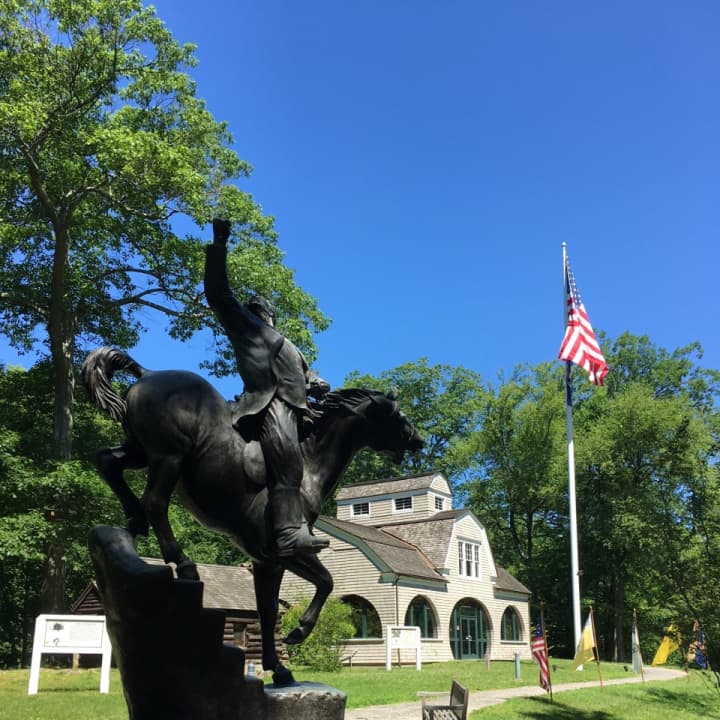As we prepare to celebrate Independence Day, here are five facts from the Revolution that are close to home in Fairfield County:
The military action moved into Connecticut in April 1777, when British troops landed in what is today Westport and marched north to Ridgefield and Danbury. They were chased back to the beach, but not before the British soldiers destroyed American supplies and battled local militia, killing Maj. Gen. David Wooster.
The Keeler Tavern Museum in the center of Ridgefield still has a cannonball lodged into a corner post from when British forces passed through the town.
Danbury celebrates the midnight ride of Sybil Ludington, a 16-year-old Dutchess County girl who rode throughout the countryside to round up the local militia as British troops advanced on Ridgefield and Danbury. There is a statue of her in front of the Danbury Library.
Putnam Memorial State Park in Redding preserves the site that Maj. Gen. Israel Putnam chose as the winter encampment for over 3,000 troops in the winter of 1778-79. It's sometimes referred to as the Valley Forge of Connecticut. At the entrance, a statue of Putnam — by sculptress Anna Hyatt Huntington — depicts his horse going down steps. Legend states that in February 1779, Putnam escaped a cohort of British Dragoons by riding his horse down 100 stone steps at Horses Neck in Greenwich.
The tiny town of Sherman is named for Roger Sherman, the only person who signed all four founding documents of the United States, including the Declaration of Independence. He also had a cobblers shop in the north end of town.
Click here to follow Daily Voice Danbury and receive free news updates.




